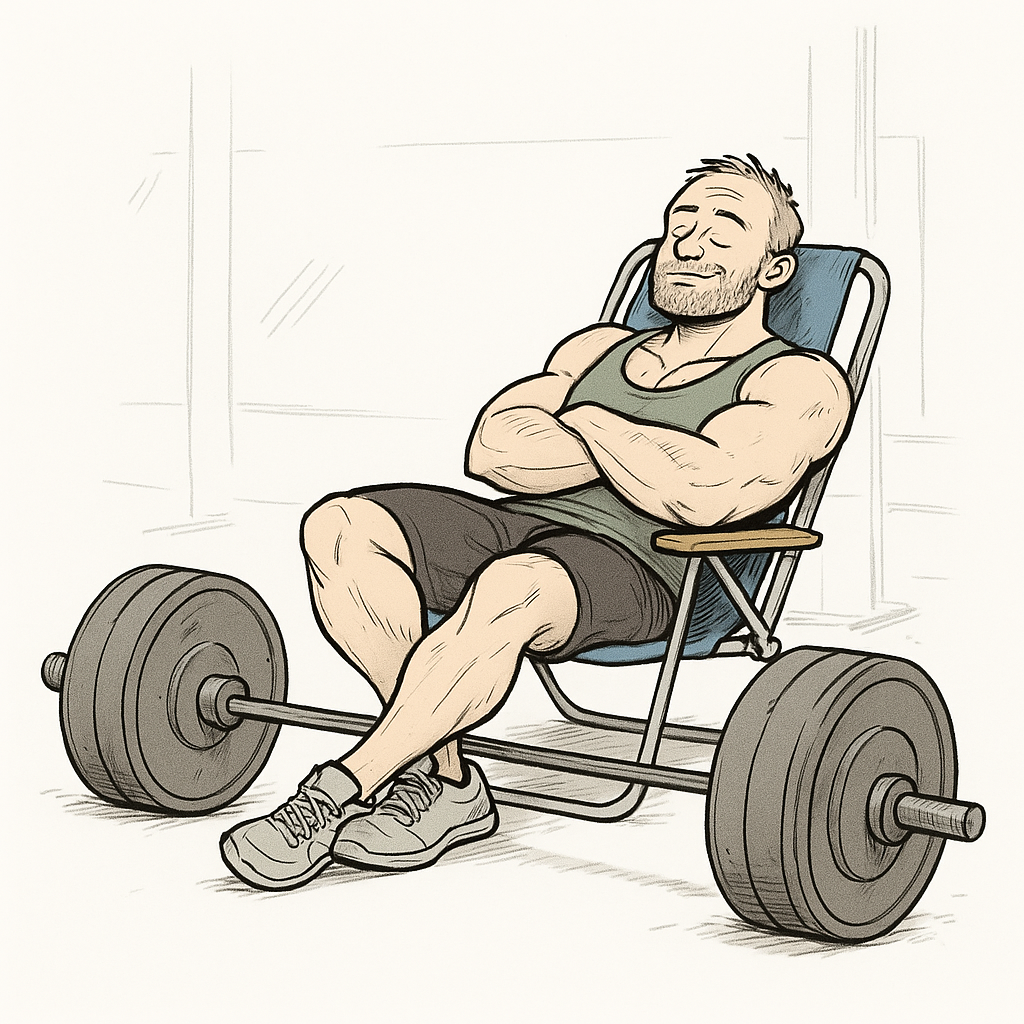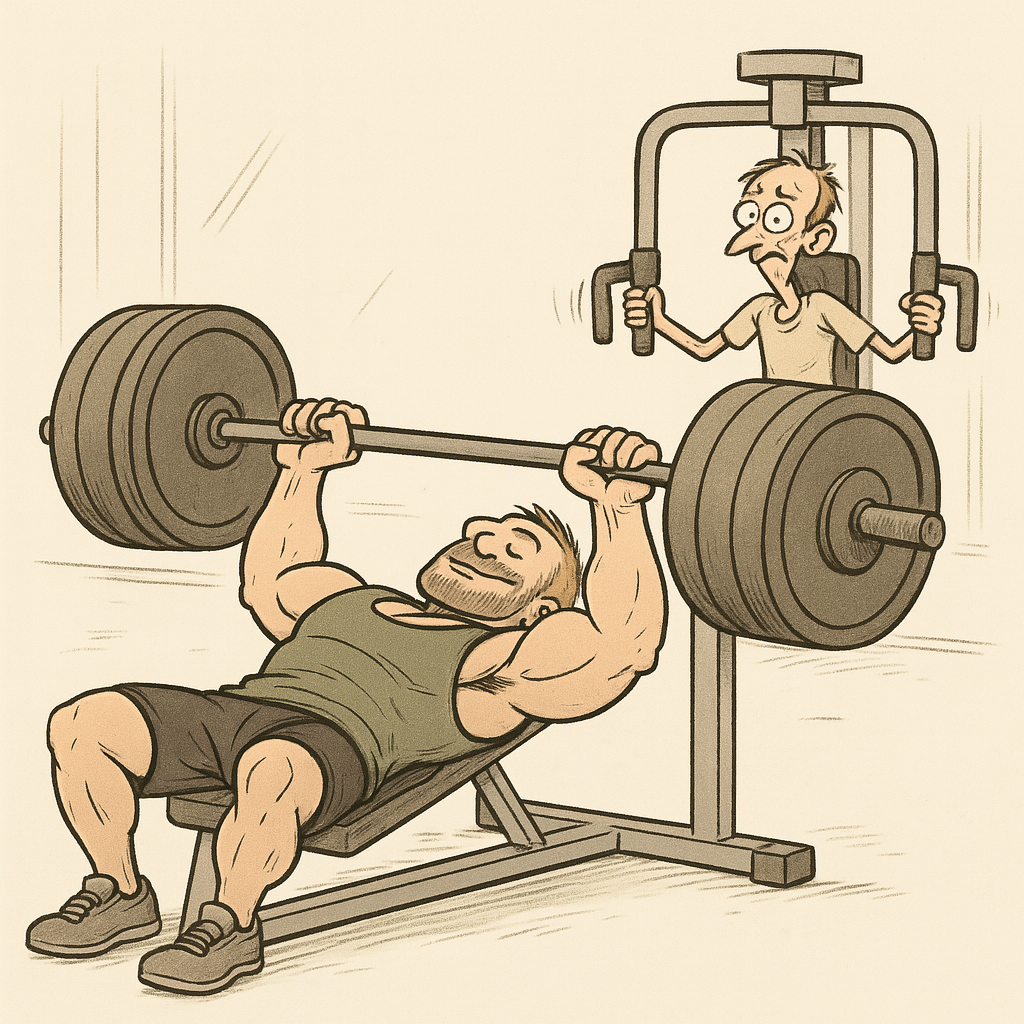
Rest to Grow!: The Science Behind Longer Rest Periods
Recent studies show that extending your rest between sets—without going overboard—can significantly boost hypertrophy.
More Rest, More Muscle: Too Good to Be True?
We’ve all heard things like:
“If you talk between sets, you lose the pump,”
“The pros rest less—look at their results,”
“If it doesn’t burn, it doesn’t grow.”
These gym mantras get thrown around all the time. But how do they hold up under scientific scrutiny? Let’s look at what recent research says about slightly longer rest periods.
Popular Myth #1 – “Shorter Rest = More Gains”
This belief usually stems from two common ideas:
- Acute hormone spikes: Short rests lead to temporary increases in GH/testosterone.
- The “pump” sensation—often (wrongly) linked to better hypertrophy.
But neither of these factors has been shown to reliably predict long-term muscle growth.
Bottom line: The pump might look great on camera, but it doesn’t guarantee more muscle fibers.
What the Research Says (2023–2025)
Meta-analysis 2024 (Singer et al.): 9 studies, 19 measures. Resting over 60 seconds gave a slight hypertrophy edge compared to ≤ 60 seconds, with diminishing returns past 90 seconds.
2016 RCT (Schoenfeld et al.): 1-minute vs. 3-minute rest in trained men (8 weeks). The 3-minute group gained more quad size (+7.0 mm vs +2.6 mm) and more strength in the squat and bench press.
2025 Review (Cui et al.) on cluster training: breaking up sets with micro-rests preserves output and reduces fatigue, reinforcing that resting ≠ slacking.
Bottom line: Most modern evidence points to 90–120 seconds as the sweet spot for hypertrophy and performance, with room to stretch to ~180 seconds for heavy compound lifts.
How to Use It #1 – “Productive Rest”
Skip the endless chatting. Use your rest time to:
- Track your loads and reps.
- Set up for your next set (belt, grip, cues).
- Recover your breath and drop heart rate (~120 bpm) so you can hit the same effort again.
Bottom line: Rest isn’t downtime—it’s invisible work.
How to Use It #2 – “The 90–150s Gold Zone”
| Exercise Type | Effort Level | Recommended Rest |
|---|---|---|
| Heavy compounds (squat, bench, deadlift) | 3–5 reps / RIR ≤ 2 | 120–180 s |
| Classic hypertrophy (8–12 reps) | RIR 2–3 | 90–120 s |
| Isolation / accessory work | 12–20 reps | 60–90 s |
Push toward the upper end if your performance drops more than 15% between sets.
Quick Questions
Does too much rest make me “go cold”?
Nope. Muscle temperature stays elevated, and the mTOR pathway is still active—as long as you can produce high effort again.
Am I hurting workout density?
With rest ≤ 3 minutes, total session time might only go up by 5–8 minutes—and you ensure more effective reps.
What if I’m short on time?
Prioritize compounds, superset accessory work, and keep rests at 60–90 seconds.
TL;DR
Rest to perform. Sustained performance = more quality volume = more muscle.
If your timer shows > 60 seconds, you’re not getting soft—you’re setting up your next round of gains.
References
- Singer A, Wolf M, Generoso L, et al. “Give it a Rest,” Front Sports Act Living, 2024.
- Schoenfeld BJ, Pope ZK, Benik FM, et al. “Longer Interset Rest…,” J Strength Cond Res, 2016.
- Cui J, Yu Y, Xu Y, Wu H. “Effectiveness of Long-Term Cluster Training…,” Front Physiol, 2025.


